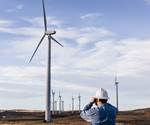AWEA announces CLEANPOWER exhibition hub
Part of the annual WINDPOWER conference and exhibition, CLEANPOWER will include partners in solar power and other energy industries.
The American Wind Energy Association (AWEA) has announced the creation of CLEANPOWER, a new exhibition hub that will bring together the utility-scale wind power, solar power and energy storage industries when it launches in Denver in May 2020.
The annual WINDPOWER Conference and Exhibition will continue as the heart of CLEANPOWER, with the addition of exhibition space and conference programming for utility-scale solar, storage and other clean energy technologies.
“The future of American energy is clean and renewable. We’re proud to announce CLEANPOWER, an exhibition hub designed from the ground up for the diverse clean energy industry and supply chain professionals who are building that future,” said Tom Kiernan, AWEA CEO, during WINDPOWER 2019’s welcome general session. “We’ve welcomed multi-technology businesses at WINDPOWER for years. Now we’re throwing the doors open, creating an even bigger opportunity for companies in wind, solar, storage and other clean energy technologies to learn and do business across the utility-scale power sector.”
Partnerships with leaders in the solar and storage industries will be essential to the success of CLEANPOWER, AWEA says. AWEA will announce formal partnerships leading up to the first CLEANPOWER expo in 2020.
Related Content
-
Revolutionizing space composites: A new era of satellite materials
A new approach for high volumes of small satellite structures uses low-CTE, low-cost CFRP cellular core, robust single-ply skins and modular panel systems to cut lead time, labor and cost for reflectors, solar arrays and more.
-
Trends fueling the composites recycling movement
Various recycling methods are being considered for composites, from novel dismantling and processing, to building capacity and demonstrating secondary use applications.
-
High-tension, vertical filament winding enables affordable flywheel energy storage system
French startup Energiestro’s prototype solar energy flywheel-based storage system aims to reduce costs with glass fiber composites and prestressed concrete.
.jpg;width=70;height=70;mode=crop)


